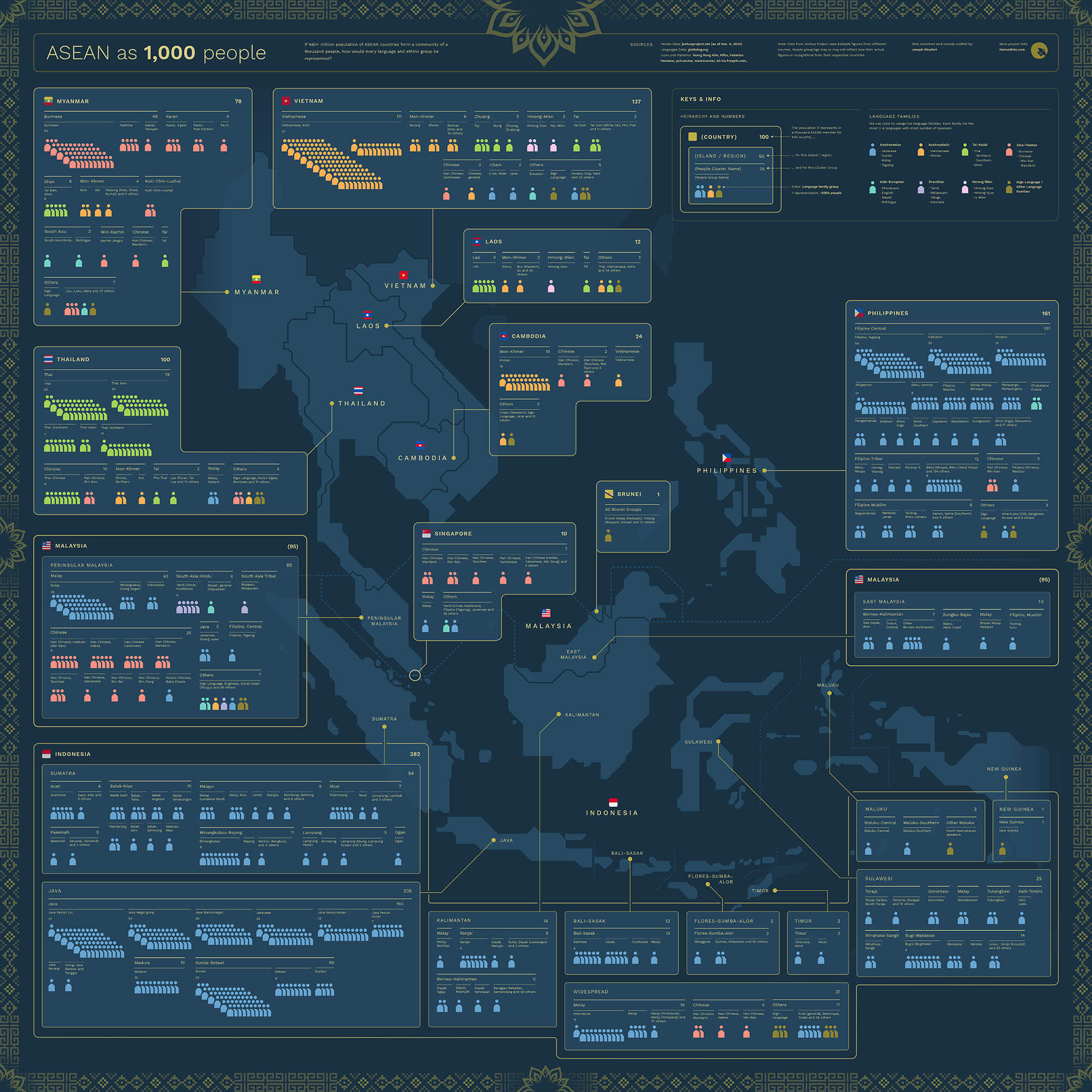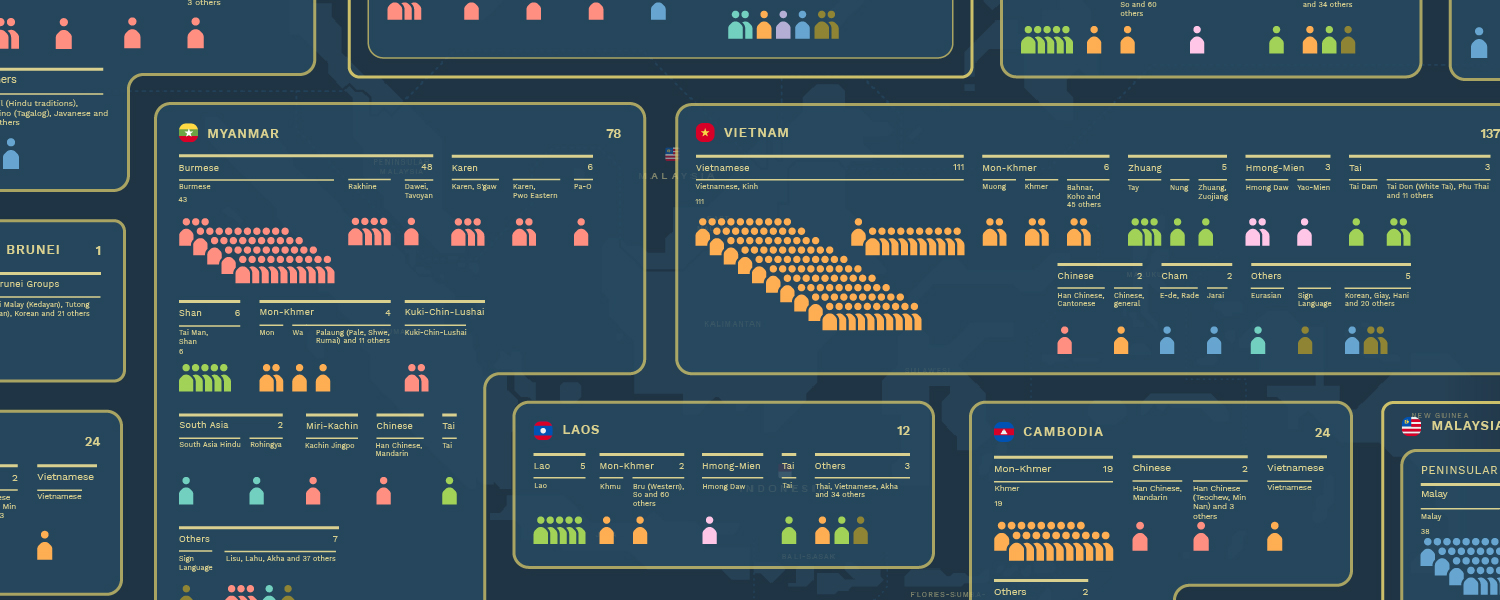Most of us might have watched at least one Hollywood movie, listened to at least one K-pop hit song or dreamt of seeing the Eiffel tower in person one day. We know so much about far off influential countries like the US, France or South Korea due to their strong cultural influence and lesser we know about our neighbors who also look up to them the same way we all do.
How is that we know more about countries on the other parts of the world than knowing our own ASEAN neighborhood?
Misconceptions about your neighbors
We have created image of who are our ASEAN neighbors in our heads based on the news and social media we consume. But in reality, we only know little to none of who they really are, what kind of life they live, what food they eat, what their traditions and religious views are. We just have a broad picture of who they are, especially the countries that they were in, unless we travel to their countries or do a in depth research
I had these misconceptions before that Singaporeans and Malaysians were predominantly Malay until I actually went there. I felt deceived by media in general that my created image of them was different before I get to travel there.
The same thing happened when I visited Thailand, Cambodia and Vietnam. I initially thought that Thailand and Cambodia were similar linguistic-wise due to their similarities in culture in general. To my surprise, I learned that Cambodia is closely linked to Vietnam in terms of language similarities. This means they are more related in terms of languages as compared to Thailand.
This made me confused and I realised that culture, language and ethnic identities were far more complicated than I thought. Culture may or may not be associated to language, and so with ethnic identities.
Researching and finding the data
I tried to look for datasets from ASEAN website or each countries’ government websites about ethnic groups until I found a dataset from Joshua Project that somehow creates groupings from different people. Tied with language data from glottolog, I encoded it with color to show how diverse the languages across ASEAN.
In any case one day, ASEAN member countries form a 1000-member congress or parliament, this map might be a good starting point.
Here is an exploratory map of ASEAN countries and their respective ethnic and language groups represented by 1000 people. Explore the map below or download a full resolution of the map here: **ASEAN1000 map**
Explore the graphic or click the graphic to explore

Explore the graphic or click the graphic to explore
Things I discovered about each of my ASEAN neighbors
Supplemented by my knowledge and experience of going to museums and reading more online about them, I learned some interesting facts about each ASEAN countries’ ethnic and language groups.
🇧🇳 Brunei
Only represented by a single person. Yes! Brunei is quite small in term of population among the ASEAN countries as it is only roughly around ~500k in population. It is recognized as a significant member of ASEAN.
🇱🇦 Laos
Surprisingly, Laos has nearly same population as Singapore with 10 and 12 representations respectively. Well after all, the size of the country does not always represent their actual population size.
🇮🇩 Indonesia
The graphic above justifies how huge Indonesia is not just by its land area but also population. The densest island being Java and surprisingly least dense (in my view) New Guinea which is only represented by one person for the entire half of the island of Papua.
🇲🇾 Malaysia
The most diverse among the ASEAN countries in my opinion with different ethnic groups from differing language families. It is also split-off into two different parts, one from mainland Asia and the other in the northern part of the Borneo Island.
🇲🇲 Myanmar
Burmese language is more related to Chinese languages as they belong to the same language family, the Sino-Tibetan language family. Another surprising discovery! But how related are they?
🇵🇭 Philippines
My preconception of how diverse my own country is having been changed given how even more diverse other ASEAN countries are. There’s one odd people group that stands out, the Chavacano Creole which is aligned with the Indo-European languages.
🇸🇬 Singapore
Where I currently at a of this writing. Singapore recognizes 3 major ethnic groups, Chinese, Malay and Indian. On the representation, the Indian population didn’t make the cut to represent a single person due to overwhelming population numbers from other ASEAN countries.
🇹🇭 Thailand
Chinese Thais are the fascinating group of people which we might often perceive in the media as the actual Thais, whereas they were actually Thai speaking people with Chinese ancestries. They were now a major part of the Thai society.
🇻🇳 Vietnam
The culture of Vietnam is strongly affiliated with China although the language of the majority Vietnamese belongs to a different language family the Austroasiatic which it shares with Khmer, a major language in Cambodia.
Boundaries seems odd, why?
Another question popped up, why is it that the boundaries in the ASEAN region seems to be a bit mixed up and not according somehow to majority population. Huge chunks of groups of people can be seen in different countries. Indonesia and the Philippines can merge into one group, Mainland Southeast Asia has groups distributed all over each other’s boundaries.
This seems to be another misconception that a country is viewed outside by the majority group. Also, Western colonizers have played a major role on how these boundaries were drawn in the past. It was not according to the people but how Western powers competing for dominance over the region.
Process in crafting the exploration map
Data sources
Things to take note about the Joshua Project dataset:
- It is a great API to access their database with great documentation. It is also the most comprehensive I found so far.
- Joshua Project uses ballpark figures from different sources which may or may not be precise but good enough to create an ethnic distribution of ASEAN ethnic groups.
- The ethnic/people groups were grouped and labeled according to how the organization see fit for the efforts of evangelization. This may or may not actually reflect how the different ethnic groups see themselves or how their own countries’ governments actually recognize them.
Meanwhile, the language data was taken from glottolog.org which is a more collaborative project by individuals and compiled from many bibliographies. This data was used to cross-reference with the languages available in the Joshua Project API and used to color code the ethnic group icons.
Cleaning and organizing the data
Using R, we accessed the datasets, crunched and cleaned them according to what information is relevant.
We breakdown the entire population that would represent a thousand people
It was not a straightforward approach as we move back and forth from Illustrator to R Studio to tweak the dataset and shape it according to different categorizations like language families and their groupings.
Here are the links to the Github project repo if you want to know in-depth how the data was processed.
- Github repo for the R exploration: https://github.com/josephricafort/asean-demographics
- Joshua Project’s API: API Documentation | Joshua Project
- Lingtypology: Glottolog functions (r-project.org)
Layout in Illustrator
The embellishments on the edges and corners were a fused motif from Thai, Sinocentric and Malay patterns. It was tricky to incorporate a design that talks about a diverse group like ASEAN.
What’s next?
Hopefully, you’ve learned a bit more about the members of the ASEAN community and the ethnic groups within each country. If we know more about each other, we can be a more inclusive community learning more about each other’s different needs, ways of living and beliefs.
If you are from an ASEAN country, let’s get to know each other better!
Feedbacks and Suggestions
Were you able to identify yourself in the map whether you’re an ASEAN or Non-ASEAN? If you have thoughts or opinions about this project, send me your thoughts: Contact - The Lost Kite

